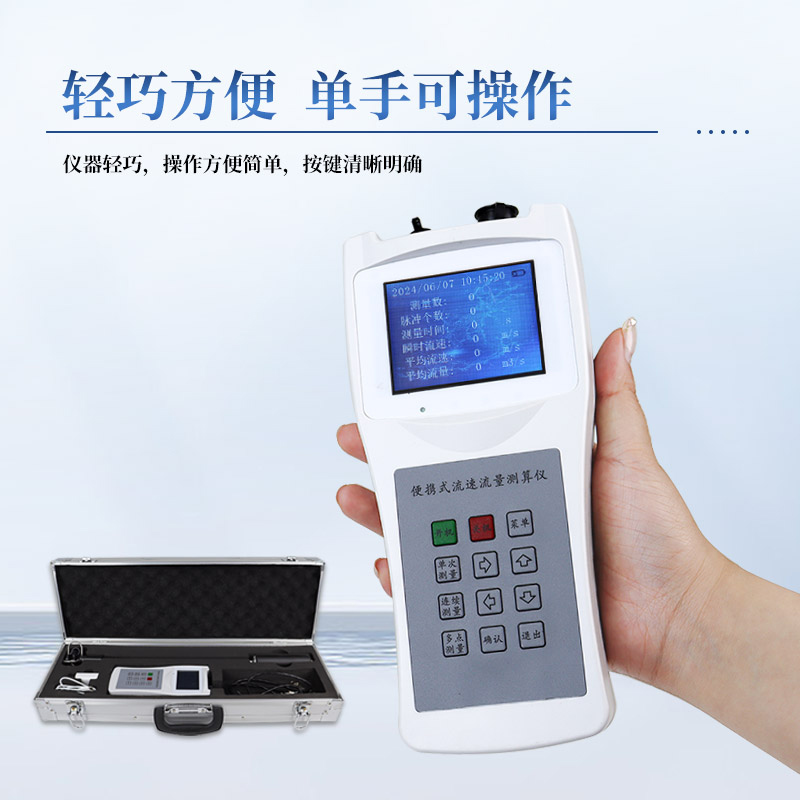Tianqiong Sensor IOT Technology Co., Ltd
Sales Manager:Ms. Emily Wang
Cel,Whatsapp,Wechat:+86 15898932201
Email:info@fengtutec.com
Add:No. 155 Optoelectronic Industry Accelerator, Gaoxin District, Weifang, Shandong, China

Sales Manager:Ms. Emily Wang
Cel,Whatsapp,Wechat:+86 15898932201
Email:info@fengtutec.com
Add:No. 155 Optoelectronic Industry Accelerator, Gaoxin District, Weifang, Shandong, China
time:2025-09-03 09:01:49 source:Weather Station viewed:192 time
As a device widely used in fields such as water conservancy monitoring, environmental governance, and engineering construction, a flow meter can monitor water flow velocity data in real time with high accuracy, providing a scientific basis for decision-making. Currently, mainstream flow meters on the market mainly adopt two core measurement technologies: radar and ultrasonic. Each of these two technologies has its own advantages and can meet the velocity measurement needs in different scenarios.
Radar-based flow meters achieve measurement based on the Doppler effect. The device emits radar waves of a specific frequency; when these waves hit the water surface, they are reflected. Due to the movement of the water flow, the frequency of the reflected waves shifts. By calculating the frequency shift and combining it with a preset algorithm, the device directly obtains the water flow velocity. This type of flow meter does not require direct contact with the water flow. During installation, it only needs to be fixed on structures such as bridges or shore brackets to realize non-contact measurement. Its advantages include strong anti-interference ability, as it is not affected by impurities in the water such as sediment and floating objects, and a wide application range. It can work stably in both natural water bodies like rivers and lakes, and artificial water bodies such as channels and reservoirs. It is particularly suitable for complex water flow environments with high flow velocity and high turbidity. In river flood prevention monitoring, it can quickly detect changes in flow velocity and issue early warnings for flood peaks; in urban waterlogging prevention and control, it can real-time measure the velocity of accumulated water on streets and link with traffic signals to ensure safety.
Ultrasonic-based flow meters, on the other hand, operate by utilizing the propagation characteristics of ultrasonic waves in water. Such devices are usually equipped with two ultrasonic transducers: one for transmission and one for reception. The transmitting transducer emits ultrasonic signals into the water flow; during propagation, these signals generate a time difference due to the movement of the water. After the receiving transducer captures the signals, the device calculates the water flow velocity based on the correlation formula between the time difference and water flow velocity. This type of flow meter features high measurement accuracy, enabling precise monitoring of changes in low-velocity water flow. It is suitable for scenarios with high requirements for velocity measurement accuracy, such as laboratory water flow research and small-scale channel flow monitoring. It has a relatively compact structure and flexible installation methods, which can be fixed underwater or installed in a floating manner to meet the needs of different monitoring points. In irrigation area flow metering, it can accurately calculate flow to improve water resource utilization efficiency; in hydropower station operation optimization, it can real-time monitor outflow distribution to enhance the power generation efficiency of water turbines.
Whether it is the convenience and anti-interference capability of radar-based flow meters or the high accuracy and sensitivity of ultrasonic-based ones, both types of flow meters share common advantages such as real-time data transmission, strong battery life, and simple operation. They can be adapted to multiple terminals such as computers and mobile phones for data viewing, providing users with efficient and reliable water flow monitoring solutions and helping various industries achieve refined water flow management.

The 7-element Portable Weather Station can real-time monitor seven key meteorological elements: wind speed, wind direction, air temperature, humidity, atmospheric pressure, illumination, and optical rainfall. Monitoring wind speed and direction helps understand air flow conditions, which is of great...
In the field of geological hazard monitoring and early warning (such as landslides, collapses, ground subsidence, debris flows, etc.), GNSS monitoring stations are a core technical means used for accurately measuring surface displacement and deformation.GNSS equipment precisely determines its absolu...
A Portable Weather Station is a movable on-site observation device. It has the advantages of portability, easy operation and accurate measurement, and can integrate monitoring functions for multiple meteorological elements to meet various dynamic observation needs. It can conduct all-weather and uni...
The Ultrasonic weather station utilizes ultrasonic technology to measure meteorological elements. When ultrasonic waves propagate in the air, their propagation speed is affected by air flow. When the wind blows from different directions, the propagation times of ultrasonic waves in the downwind and...